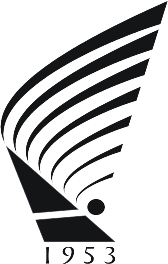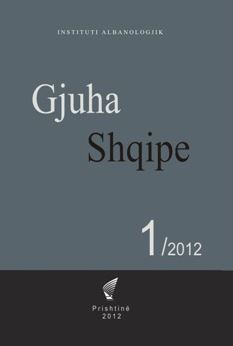E Bukura e Dheut is a character in Albanian mythology and folklore, depicted in some traditions as a crafty fairy, and in other traditions as a chthonic/earth goddess, the counterpart of e Bukura e Detit and i Bukuri i Qiellit. In some Albanian traditions she is regarded as the sister of e Bukura e Detit and the consort of Baba Tomor.
Baba Tomor or Baba Tomorr is the name of the father god, used in central Albanian mythology and folklore to refer to the father of gods and humans. Baba Tomor is related to the cult practiced on Mount Tomorr. According to the local tradition his consort is e Bukura e Dheut, a chthonic/earth goddess.

Prende is the dawn-goddess, goddess of love, beauty, fertility, and protector of women, in the Albanian pagan mythology. She is also called Afërdita in reference to Hylli i Dritës, Afêrdita "the Star of Light, Afêrdita" and to Ylli i Mbrëmjes, Afërdita. According to some Albanian traditions, Prende is the daughter of Zojz, the Albanian sky and lighning god.
Perëndi is an Albanian noun for God, deity, sky and heaven. It is used capitalized to refer to the Supreme Being, and uncapitalized for "deity", "sky" and "heaven".
Shurdh is a weather and storm god in Albanian pagan mythology, who causes hailstorms and throws thunder and lightning. Shurdh was worshiped in northern Albania until recent times.

The kulshedra or kuçedra is a water, storm, fire and chthonic demon in Albanian mythology and folklore, usually described as a huge multi-headed female serpentine dragon. The kulshedra is believed to spit fire, cause drought, storms, flooding, earthquakes and other natural disasters against mankind. In Albanian mythology she is usually fought and defeated by a drangue, a semi-human winged divine hero and protector of mankind. Heavy thunderstorms are thought to be the result of their battles.

Albanian folk beliefs comprise the beliefs expressed in the customs, rituals, myths, legends and tales of the Albanian people. The elements of Albanian mythology are of Paleo-Balkanic origin and almost all of them are pagan. Albanian folklore evolved over the centuries in a relatively isolated tribal culture and society. Albanian folk tales and legends have been orally transmitted down the generations and are still very much alive in the mountainous regions of Albania, Kosovo, western North Macedonia, lands formerly inhabited by Albanians like Montenegro and southern Serbia, and among the Arbëreshë in Italy and the Arvanites in Greece.
Gruemirë is a former municipality in the Shkodër County, northwestern Albania. At the 2015 local government reform it became a subdivision of the municipality Malësi e Madhe. The population at the 2011 census was 8,890.
Zana is an Albanian mythological figure usually associated with mountains, springs and streams, forests, vegetation and animals, and sometimes destiny. Zana is thought to have been originally a pre-Roman deity, and an Illyrian goddess equivalent of the Ancient Greek Artemis and Roman Diana.
The drangùe is a semi-human winged divine figure in Albanian mythology and folklore, associated with weather and storms. Babies destined to become drangue are born with their heads covered in caul and with two or sometimes four wings under their arms. The drangue hold supernatural powers, especially in the wings and arms. He is made invulnerable by the singular conjunction produced at his birth, and can die only if this conjunction is repeated once again. The main goal of the drangue is to fight the kulshedra in legendary battles. He uses meteoric stones, lightning-swords, thunderbolts, piles of trees and rocks to defeat the kulshedra and to protect mankind from storms, fire, floods and other natural disasters caused by her destructive power. Heavy thunderstorms are thought to be the result of their battles.
*En or *Enji is a reconstructed name of the fire or thunder god in the Albanian pagan mythology, which has continued to be used in the Albanian language to refer to Thursday. The theonym Enete was used by Albanian scholar and language master Kostandin Kristoforidhi in 1879 as the Albanian translation of Greek Zeus / Δία.
Perria or Pehria is a fairy-like mountain figure in Albanian mythology and folklore.

Binak Alia (1805–1895) was an Albanian leader from the Highlands of Gjakova. He is remembered mainly for his participation in the Albanian Revolt of 1845, and as a wise old man who helped resolve blood feuds in the area.
Sabit Uka was a Kosovar Albanian author and noted historian.

Albanological Institute of Pristina, Albanian: Instituti Albanologjik i Prishtinës or Instituti Albanologjik - Prishtinë, is the main Institute of Albanology in Kosovo. It is an independent public institution. Together with the Centre of Albanological Studies in Tirana, they represent the core scientific research centers on Albanology.

Gjuha Shqipe (Gjuha Shqipe is a scientific magazine published in by the Albanological Institute. It focuses on topics related to the Albanian language, its purification, spread, and development, and possible changes on its standard form.
Zojz is a sky and lightning god in Albanian pagan mythology. Regarded as the chief god and the highest of all gods, Zojz had been worshiped in northern Albania until the early 20th century. The cult practiced by the Albanians on Mount Tomorr in central Albania is considered as a continuation of the ancient sky-god worship. In classical antiquity Zojz is considered to have been worshiped by Illyrians as the ancestors of the Albanians. Albanian Zojz is clearly the equivalent and cognate of Messapic Zis and Ancient Greek Zeus.

Gruemiri is a small historical Albanian tribe (fis) in the former municipality of Gruemirë in the region of Malësia.
E Bija e Hënës dhe e Diellit is a character in Albanian mythology and folklore. She is the lightning of the sky which falls everywhere from heaven on the mountains and the valleys and strikes pride and evil. In the legends she helps a hero winning a fight against a kulshedra. Sometimes described with a star on her forehead and a moon on her chest, her victory over the kulshedra symbolizes the supremacy of the deity of the sky over that of the underworld.
Nëna e Diellit is a mother goddess in Albanian folk beliefs. A sacred ritual called "the funeral of the Sun's Mother" was very widespread in southeastern Albania until the 20th century. She has been described by scholars as a heaven goddess and a goddess of agriculture, livestock, and earth fertility, as suggested by the sacred ritual dedicated to her. Nëna e Diellit also features as a deity in Albanian folk tales.